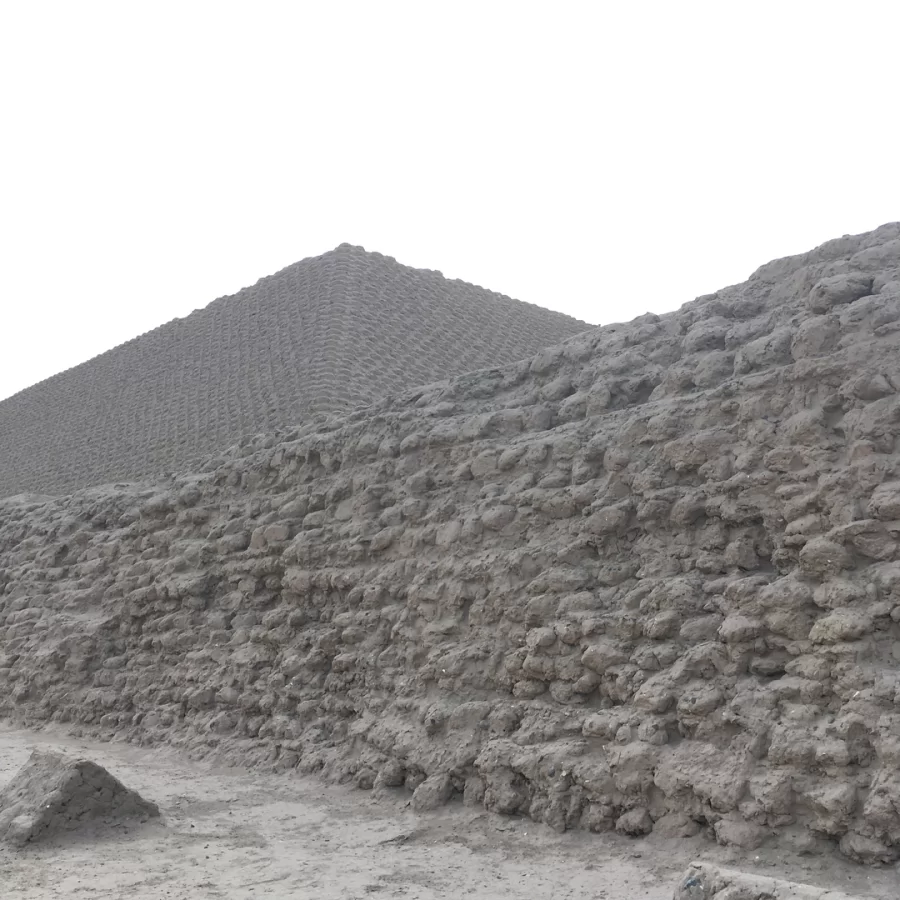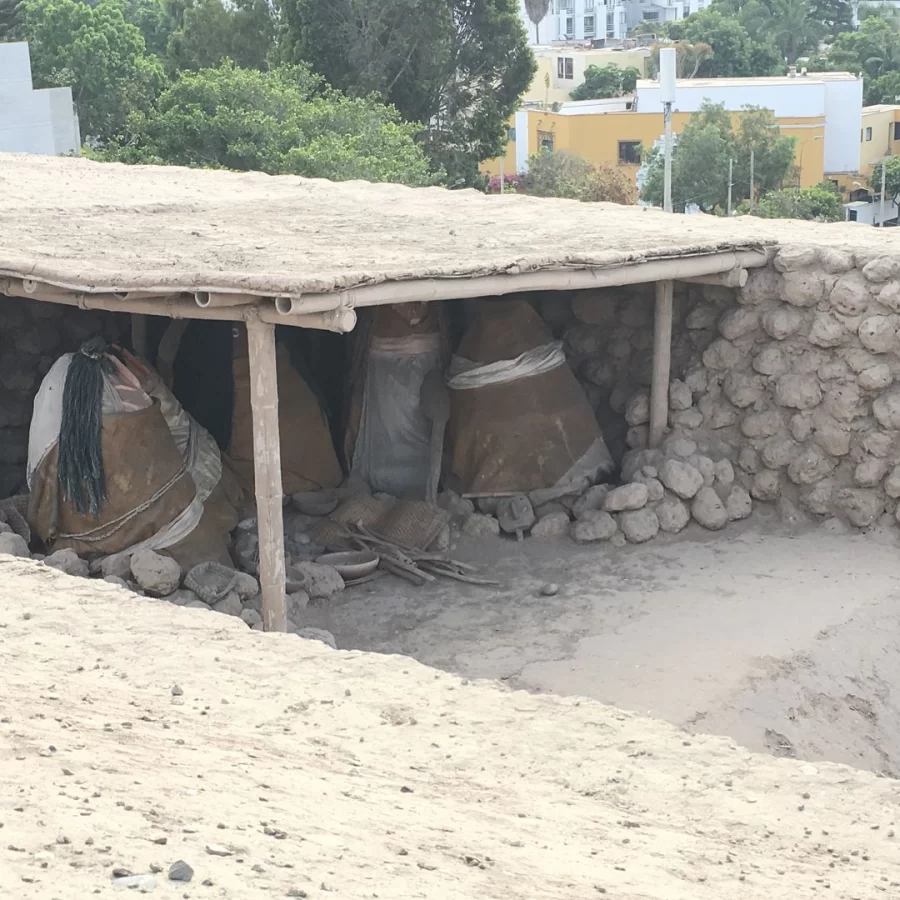In the middle of the residential district of San Isidro is a small fragment of our pre-Columbian history, a space where the past and the present mingle.
In the Huaca Huallamarca Archaeological Site, you can visit, besides the pyramid, the museum of Huallamarca. Do not miss this incredible place in Lima, we leave you everything you need to know in this article.
Table of Contents
This pyramid is more than 2200 years old. Something that is very remarkable in the structure of this pyramid are the adobe bricks with which it was built, this pyramid is attributed to the Pinazo culture (400 - 700 AD), which made the adobe bricks rustically molded by hand, which led to the traces of these people were recorded in each piece of adobe. With a base of 85 m long by 67 m wide and an elevation of 20 m, it is presumed that this huaca was built on superimposed platforms with gravel and earth fillings, contained by the adobe walls.
The first studies and detailed information of this site were provided by Thomas Hutchinson in 1873. During the year 1942 the archaeologist Julio C. Tello, made the first archaeological excavations, who determined that the Huaca, at that time called Pan de Azúcar, was itself part of the archaeological group called Huallamarca.
In 1958 a much more exhaustive excavation was carried out by Dr. Arturo Jimenez Borja, a study during which a total of 48 funerary bundles were found, which promoted the creation of one of the first site museums in Peru, as well as promoting the protection of the complex under the direction of the municipality of San Isidro.
The Huacas are sacred spaces and/or objects of great religious and spiritual importance in the Andean cosmovision.
Within the animist thought of the pre-Columbian settlers, there is a generalized idea that everything that inhabits our world has life or a spirit, which is why the huacas could be mountains, rocks, lagoons, as well as temples built in strategic places, where rituals and offerings were performed.
Nowadays, many of these sacred spaces are still venerated, especially in the high Andean zones, the respect to these huacas is still in force, since the Andean population still conserves the animist feeling, still venerating the Pachamama and still doing ceremonies in honor to these huacas.
The Huaca Huallamarca was rebuilt by Dr. Arturo Jimenez Borja, although the shape of the pyramid was originally staggered, the doctor implemented an access ramp which was leveled, through much effort the pyramid was rescued. Previously, this space would be demolished for the creation of a park in 1950, but this project was not carried out, since the Casa de la Cultura initiated the revaluation and reconstruction of the space.


As for the architecture, it has the shape of a truncated pyramid with 3 levels of wide overlapping platforms, whose access to the highest part is a 9 meters wide access ramp at the front.
As for the constitution of the walls of the pyramid, it is denoted that it is constituted by small adobes, kneaded and molded manually, giving it irregular conical form, which is quite outstanding, since in the other archaeological sites next to the Huaca Huallamarca this type of adobes were not used. The way to assemble the walls, was in trapezoidal design, which gave a seismic resistant structure and led to the good conservation of the pyramid.
It is located at 201 Nicolás de Ribera Avenue, on the corner with El Rosario Avenue, in the District of San Isidro, in the city of Lima.
The service is open Tuesday through Saturday from 9 a.m. to 5 p.m.
The entrance fees are as follows:
